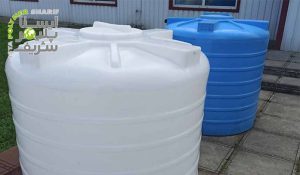With population growth and urbanization, the use of polyethylene septic tanks is increasingly essential. Today, population growth and urbanization have led to changes in lifestyle and industrialization in most parts of the world. The production of each piece in workshops and factories generates waste and sewage. Additionally, the rising population has increased the need for hospitals, hotels, schools, and livestock farms, all of which produce wastewater. Treating this wastewater and preventing its release into the environment is crucial. One simple and cost-effective method for treating wastewater is using a composite septic system. A septic tank is essentially a chamber where wastewater enters, and through the separation of different phases, sedimentation of materials, and decomposition of some biodegradable solids, it helps in environmental cleanup. Depending on the tank’s body material, septic tanks can be made from brick, concrete, polymer (polyethylene tanks), or composite materials. This article will focus more on polyethylene septic tanks.
Production of Septic Tanks Using Heavy-Duty Polyethylene
These tanks are primarily made from heavy-duty polyethylene (HDPE), which has a higher density compared to other polyethylene grades. These systems are produced with PE80 and PE100. The need for polyethylene septic tanks arises from the shortcomings of brick and concrete models.
The two types, brick and concrete, are highly permeable and prone to cracking, which causes sewage leakage and environmental pollution. However, polyethylene septic tanks are made as a single piece with no seams, ensuring no leakage. They also have high pressure resistance due to the properties of polyethylene and its long-chain structure. Additionally, polyethylene’s excellent chemical resistance prevents reactions with wastewater chemicals, contributing to a long lifespan. Polyethylene septic tanks are lighter than brick and concrete models, making them easier to transport and install.
Advantages of Polyethylene Septic Tanks
- High resistance to corrosion
- High resistance to chemicals
- High resistance to environmental conditions
- High resistance to pressure from soil loads
- No pollution leakage due to complete and precise sealing and absence of seams
- Fast construction
- Quick installation
- Can be buried underground
- Prevents space occupation due to the possibility of underground installation
- Very lightweight
- Can be relocated several years after initial installation
- Long lifespan
- Ease of sludge removal
- UV resistant
Conclusion
Polyethylene septic tanks can be produced in single-wall or double-wall versions, with the double-wall type offering greater durability and security. They are manufactured using the spiral method.
When producing such a tank, it is crucial to be aware of the burial depth and the amount of soil on top of the septic tank, as well as to estimate the soil load and traffic loads. These factors are important for selecting the appropriate polyethylene grade.






